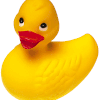23.11.2010 | 17:33
Web 2.0
The term "Web 2.0" was coined in 1999 by Darcy DiNucci, a consultant on electronic information design (information architecture). In her article, "Fragmented Future", DiNucci writes:[6][7][8]
The Web we know now, which loads into a browser window in essentially static screenfulls, is only an embryo of the Web to come. The first glimmerings of Web 2.0 are beginning to appear, and we are just starting to see how that embryo might develop. The Web will be understood not as screenfulls of text and graphics but as a transport mechanism, the ether through which interactivity happens. It will [...] appear on your computer screen, [...] on your TV set [...] your car dashboard [...] your cell phone [...] hand-held game machines [...] maybe even your microwave oven.
Her use of the term deals mainly with Web design, aesthetics, and the interconnection of everyday objects with the Internet; she argues that the Web is "fragmenting" due to the widespread use of portable Web-ready devices. Her article is aimed at designers, reminding them to code for an ever-increasing variety of hardware. As such, her use of the term hints at, but does not directly relate to, the current uses of the term.
The term Web 2.0 did not resurface until 2003.[9][10][11][12] These authors focus on the concepts currently associated with the term where, as Scott Dietzen puts it, "the Web becomes a universal, standards-based integration platform".[11] John Robb wrote: "What is Web 2.0? It is a system that breaks with the old model of centralized Web sites and moves the power of the Web/Internet to the desktop."[12]
In 2004, the term began its rise in popularity when O'Reilly Media and MediaLive hosted the first Web 2.0 conference. In their opening remarks, John Battelle and Tim O'Reilly outlined their definition of the "Web as Platform", where software applications are built upon the Web as opposed to upon the desktop. The unique aspect of this migration, they argued, is that "customers are building your business for you".[13] They argued that the activities of users generating content (in the form of ideas, text, videos, or pictures) could be "harnessed" to create value. O'Reilly and Battelle contrasted Web 2.0 with what they called "Web 1.0". They associated Web 1.0 with the business models of Netscape and the Encyclopędia Britannica Online. For example,
Netscape framed "the web as platform" in terms of the old software paradigm: their flagship product was the web browser, a desktop application, and their strategy was to use their dominance in the browser market to establish a market for high-priced server products. Control over standards for displaying content and applications in the browser would, in theory, give Netscape the kind of market power enjoyed by Microsoft in the PC market. Much like the "horseless carriage" framed the automobile as an extension of the familiar, Netscape promoted a "webtop" to replace the desktop, and planned to populate that webtop with information updates and applets pushed to the webtop by information providers who would purchase Netscape servers.[14]
In short, Netscape focused on creating software, updating it on occasion, and distributing it to the end users. O'Reilly contrasted this with Google, a company which did not at the time focus on producing software, such as a browser, but instead focused on providing a service based on data such as the links Web page authors make between sites. Google exploits this user-generated content to offer Web search based on reputation through its "page rank" algorithm. Unlike software, which undergoes scheduled releases, such services are constantly updated, a process called "the perpetual beta". A similar difference can be seen between the Encyclopędia Britannica Online and Wikipedia: while the Britannica relies upon experts to create articles and releases them periodically in publications, Wikipedia relies on trust in anonymous users to constantly and quickly build content. Wikipedia is not based on expertise but rather an adaptation of the open source software adage "given enough eyeballs, all bugs are shallow", and it produces and updates articles constantly. O'Reilly's Web 2.0 conferences have been held every year since 2004, attracting entrepreneurs, large companies, and technology reporters.
In terms of the lay public, the term Web 2.0 was largely championed by bloggers and by technology journalists, culminating in the 2006 TIME magazine Person of The Year (You).[15] That is, TIME selected the masses of users who were participating in content creation on social networks, blogs, wikis, and media sharing sites. The cover story author Lev Grossman explains:
It's a story about community and collaboration on a scale never seen before. It's about the cosmic compendium of knowledge Wikipedia and the million-channel people's network YouTube and the online metropolis MySpace. It's about the many wresting power from the few and helping one another for nothing and how that will not only change the world, but also change the way the world changes.It's a story about community and collaboration on a scale never seen before.
Um bloggiš
Hjaltablogg
Heimsóknir
Flettingar
- Ķ dag (25.6.): 0
- Sl. sólarhring:
- Sl. viku:
- Frį upphafi: 0
Annaš
- Innlit ķ dag: 0
- Innlit sl. viku:
- Gestir ķ dag: 0
- IP-tölur ķ dag: 0
Uppfęrt į 3 mķn. fresti.
Skżringar




Bęta viš athugasemd [Innskrįning]
Ekki er lengur hęgt aš skrifa athugasemdir viš fęrsluna, žar sem tķmamörk į athugasemdir eru lišin.